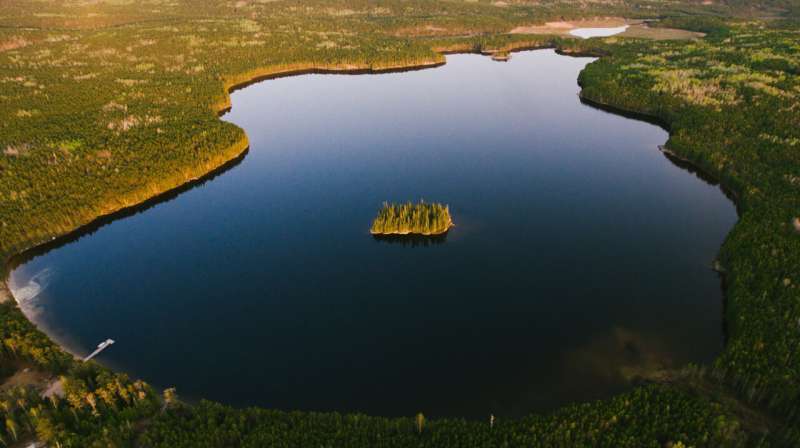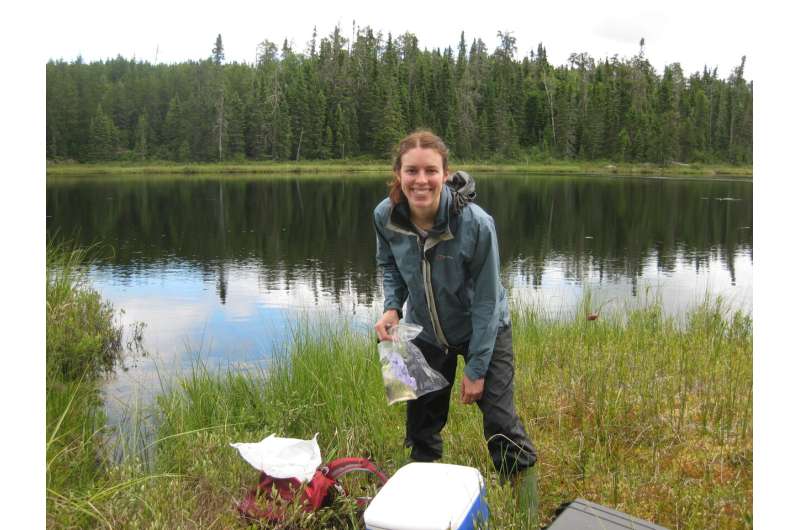Freshwater connectivity can transport environmental DNA through the landscape

A new paper published in the journal Proceedings of the Royal Society B used environmental DNA (eDNA) metabarcoding to analyze fish and zooplankton communities.
The study found that the movement of water between freshwater bodies, or freshwater connectivity, can transport eDNA. This highlights the potential of eDNA to provide a comprehensive view of freshwater biodiversity.
Aquatic ecosystems are connected by waterways, which allow fish, plants, and other organisms to move from one place to another. This connectivity is important for the resilience of aquatic populations, but it can also make it difficult to track the DNA of these organisms.
The study, led by Dr. Joanne Littlefair, a lecturer in biological sciences at Queen Mary University of London, looked at three lake networks containing 21 lakes in Canada’s Boreal Forest at IISD Experimental Lakes Area.
The researchers found that within-lake eDNA generally reflected the habitat preferences of the species, but that some eDNA was also transported into downstream lakes. Lakes with a higher degree of connectivity had more eDNA detections that could not be explained by conventional monitoring techniques.
The findings have implications for the use of eDNA to monitor biodiversity in freshwater ecosystems. eDNA is a promising tool for biodiversity monitoring, but data must be interpreted in light of connectivity in the landscape.
“eDNA can be used to detect the presence of species that are not easily monitored using conventional methods, including invasive species, or for monitoring the presence of rare or endangered species,” said Dr. Littlefair.
“Our study showed that eDNA surveys can be carefully designed to consider the connectivity of the freshwater system being studied. In systems with high levels of connectivity, it is important to collect samples from multiple locations, which will allow us to build a complete picture of the biodiversity present.”

The study also highlights the need for more research on the factors, such as effects of water movement, influencing the spatial resolution of eDNA detection. For example, if the water in an ecosystem is moving quickly, then it may be necessary to collect more samples to increase the chances of detecting eDNA. This research will help to improve scientists’ understanding of how eDNA can be used to monitor and conserve aquatic biodiversity.
The study was a collaboration between researchers from the UK’s Queen Mary University of London and the following Canadian institutions: McGill University, Lakehead University, IISD Experimental Lakes Area, and SHARCNET. Dr. Littlefair worked at McGill University and then QMUL during the study.
More information:
Freshwater connectivity transforms spatially integrated signals of biodiversity, Proceedings of the Royal Society B: Biological Sciences (2023). DOI: 10.1098/rspb.2023.0841. royalsocietypublishing.org/doi … .1098/rspb.2023.0841
Citation:
Freshwater connectivity can transport environmental DNA through the landscape (2023, September 12)
retrieved 13 September 2023
from https://phys.org/news/2023-09-freshwater-environmental-dna-landscape.html
This document is subject to copyright. Apart from any fair dealing for the purpose of private study or research, no
part may be reproduced without the written permission. The content is provided for information purposes only.
For all the latest Science News Click Here
For the latest news and updates, follow us on Google News.

